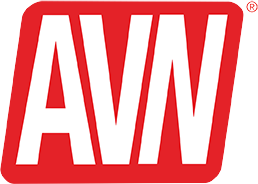President Bush may want universal and affordable broadband in three years, but the Commerce Department says it’s going to take a lot more work to get there, even with the number of Americans with broadband connections more than doubling between 2001 and 2003.
On the other hand, the Commerce Department’s findings may also be slightly behind the curve, if you take the word of Nielsen//NetRatings. Commerce’s study found 20 percent of American homes with broadband by October 2003, but Nielsen//NetRatings says the figure may be closer to half the country. But Commerce also said the U.S. broadband spread is still lagging compared to countries like Canada, South Korea, and Taiwan.
"This is lousy," Information Technology Association of America chief Harris Miller told reporters. "We're just not keeping up with our competitors."
And while Commerce noted whites and Asian Americans/Pacific Islanders having more broadband access than black or Hispanic Americans by October 2003, FeedRoom – a New York-based online video service company – says a deal with Spanish-language broadcaster Telemundo has become a major online hit.
"Telemundo has become one of our strongest client sites," FeedRoom chief executive Bart Feder told reporters, with Spanish-language soap operas a particular favorite among Hispanic Netizens. "This is programming that directly caters to an audience that's very interested in this programming. It's getting hundreds of thousands of views."
The Henry J. Kaiser Family Foundation found, however, that there are socioeconomic factors which still block some minorities from keeping pace with others and with white Netizens on the Net in general and on broadband in particular. A recent foundation survey showed 80 percent of white children ages 8-18 have Internet access in their homes compared to 67 percent for Hispanics and 61 percent for African Americans, but both indicate more than half their populations are online.
Commerce Department spokesman Clyde Ensslin, who heads communications for a Commerce agency known as the National Telecommunications and Information Administration, said progress toward Bush’s universal broadband access goal is improving since the Commerce survey was done.
Clyde Ensslin, director of communications for the National Telecommunications and Information Administration, one of the Commerce agencies involved in producing the report, said progress since the survey was completed indicates that the United States is on track to meet Bush's stated goal of universal access by 2007.
Indeed, the Commerce Department under the Bush Administration has placed itself squarely on the side of broadband development and of getting as many Americans connected as possible. Assistant Secretary for Technology Policy Bruce Mehlman made that commitment ironclad in a 2001 address to the Association for Local Telecommunications Services in Virginia, in which he said broadband would be vital for economic, national security, government, health, and education goals in coming years.
“The power of broadband networks is most apparent, and most often discussed, in the context of economic output and business productivity… supply-chain management, customer relations and support, and just-in-time manufacturing; for example, cut costs and increase outputs,” Mehlman said in that address.
“And few appreciate the enormous economic gains possible from distributed any-time, any-where learning…. High speed, high capacity networks are also critical to promoting our national security…. Broadband connections enable immediate data backups, used by some World Trade Center tenants to preserve their data before the buildings collapsed,” he continued. “Just imagine how much more extensive the damage to our financial system would have been if the important law firms and financial institutions housed in the WTC had not been able to back up their information offsite and on a daily basis.”









